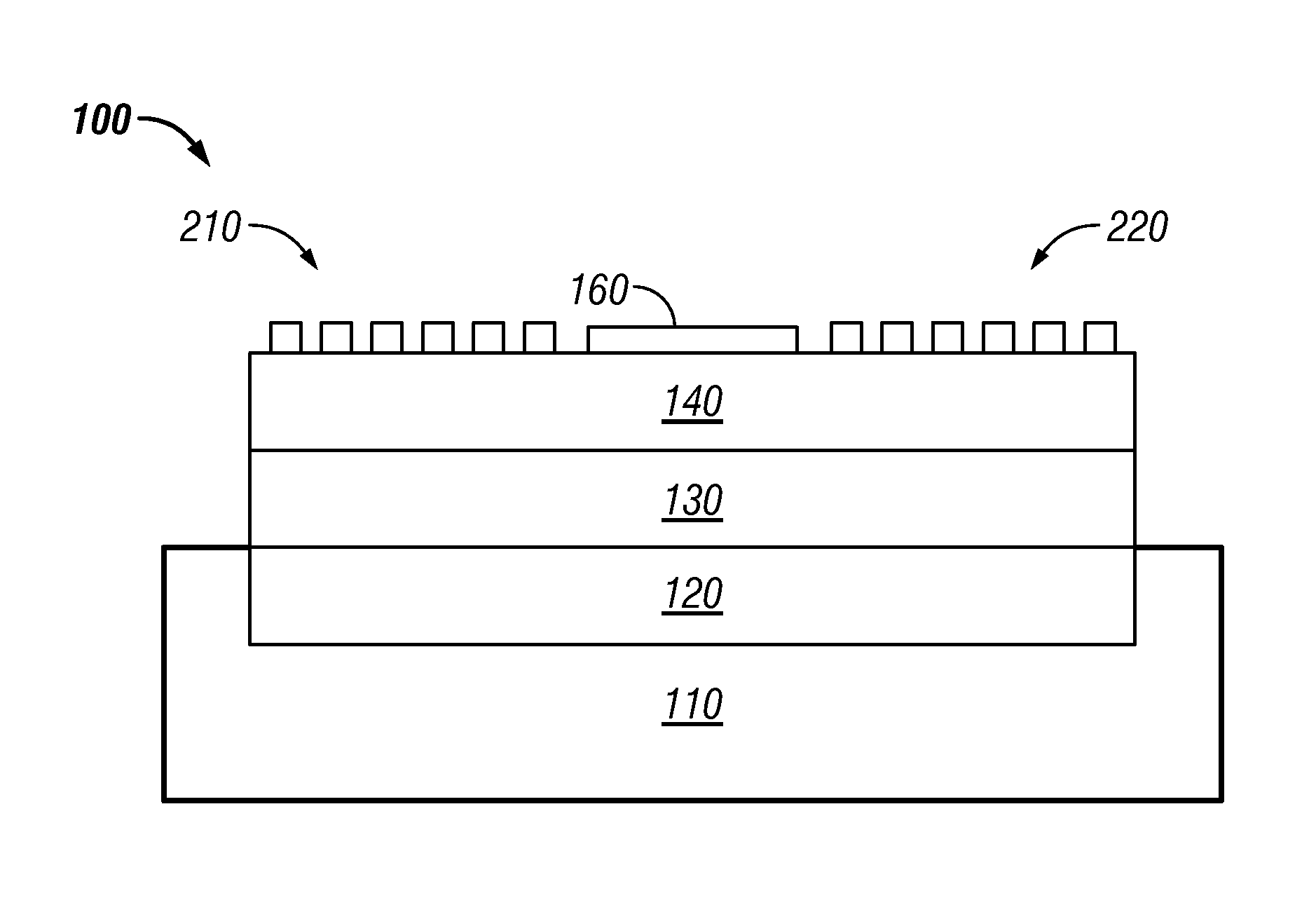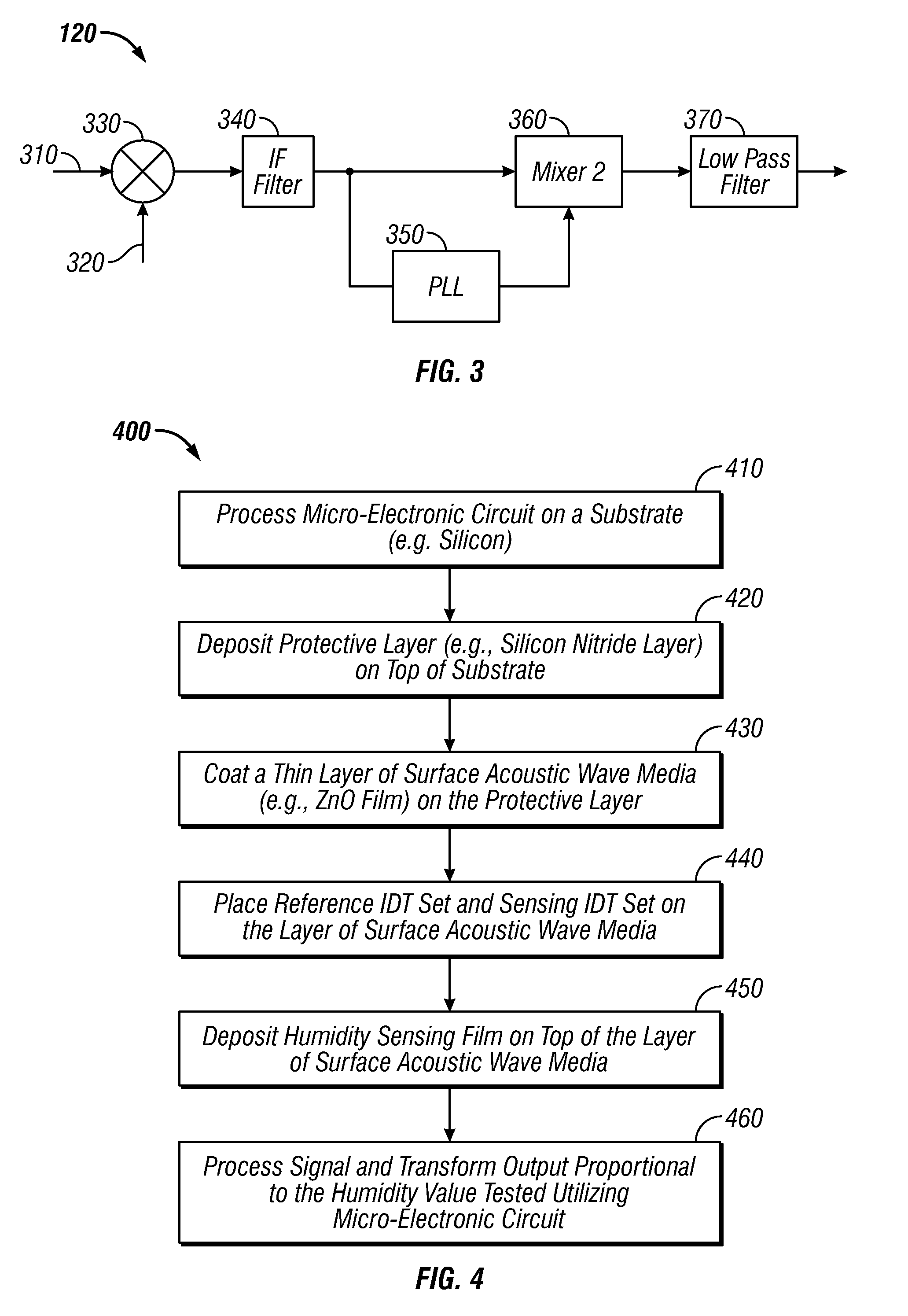Surface acoustic wave based humidity sensor apparatus with integrated signal conditioning
a humidity sensor and signal conditioning technology, applied in the direction of resistive material coating, material resistance, mechanical means, etc., can solve the problems of 2% or less, inherent accuracy issues, slow response time, etc., to improve the effect of improving the coupling rate of the surface acoustic wave and improving the resolution and sensitivity of the sensor
- Summary
- Abstract
- Description
- Claims
- Application Information
AI Technical Summary
Benefits of technology
Problems solved by technology
Method used
Image
Examples
Embodiment Construction
[0021]The particular values and configurations discussed in these non-limiting examples can be varied and are cited merely to illustrate at least one embodiment and are not intended to limit the scope thereof.
[0022]FIG. 1 illustrates a cross sectional view of a SAW-based humidity sensor apparatus 100, which can be implemented in accordance with a preferred embodiment. The SAW-based humidity sensor apparatus 100 generally includes a micro-electronic circuit 120 that can be processed at a silicon substrate 110. A protective layer 130 of, for example, silicon nitride, can be deposited on top of the micro-electronic circuit 120 to protect the micro-electronic circuit 120 from damage. The micro-electronic circuit 120 can be processed at the silicon substrate 110, which is compatible with normal electronic processes.
[0023]Surface acoustic wave media 140 (e.g., a ZnO film) can then be deposited on top of the protective layer 130. The ZnO film thus acts as surface acoustic wave media. Acous...
PUM
| Property | Measurement | Unit |
|---|---|---|
| response time | aaaaa | aaaaa |
| thickness | aaaaa | aaaaa |
| humidity | aaaaa | aaaaa |
Abstract
Description
Claims
Application Information
 Login to View More
Login to View More - R&D
- Intellectual Property
- Life Sciences
- Materials
- Tech Scout
- Unparalleled Data Quality
- Higher Quality Content
- 60% Fewer Hallucinations
Browse by: Latest US Patents, China's latest patents, Technical Efficacy Thesaurus, Application Domain, Technology Topic, Popular Technical Reports.
© 2025 PatSnap. All rights reserved.Legal|Privacy policy|Modern Slavery Act Transparency Statement|Sitemap|About US| Contact US: help@patsnap.com



